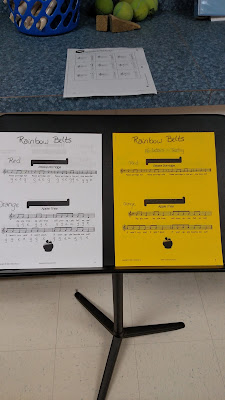"brag tags" and phone calls
Brag tags are little pieces of paper with brief positive messages on them. You can write the messages or you have the messages pre-printed on the tags.
 |
| from Cara's Creative Playground |
The easier way is use the pre-printed ones. Buy some fun Astro Brights paper and make copies. You'll get many tags on a sheet so you'll need to cut them down. I recommend finding the school's paper cutter or asking the art teacher if you could use the art room cutter. So much more efficient!
Hand out brag tags at the end of each class. Choose a FEW students who demonstrated behavior or character traits that you want everyone to show. Give them a brag tag. Record their names. A little check after each name on your roster is enough. The object is to give a brag tag to each student over time so you'll want to track this.
You're already thinking about some of your students who struggle to show appropriate behavior. How will they ever get a brag tag? You can give tags for effort, improvement or even stepping out of their comfort zone and trying something new.
Brag tag templates can be found all over TPT and teacher blogs. In the past, I used Cori Bloom's Notes from your Music Teacher (link here) and Lindy DuPlessis's 35 Character Education Brag Tags (link here) Now I use Cara's Creative Playground's Growth Mindset Positive Notes (link here) .
In my next post, I will write about parent phone calls including a "script" for you to follow.
PSSSST! Next Thursday (and only Thursday), I will be giving you the chance to score my latest Musician in the Spotlight FOR FREE! Stop by my store and look for the newest product and download it for free! HINT: the musician is a MAJOR Country Music Star.
Happy Honking! Ellen


















